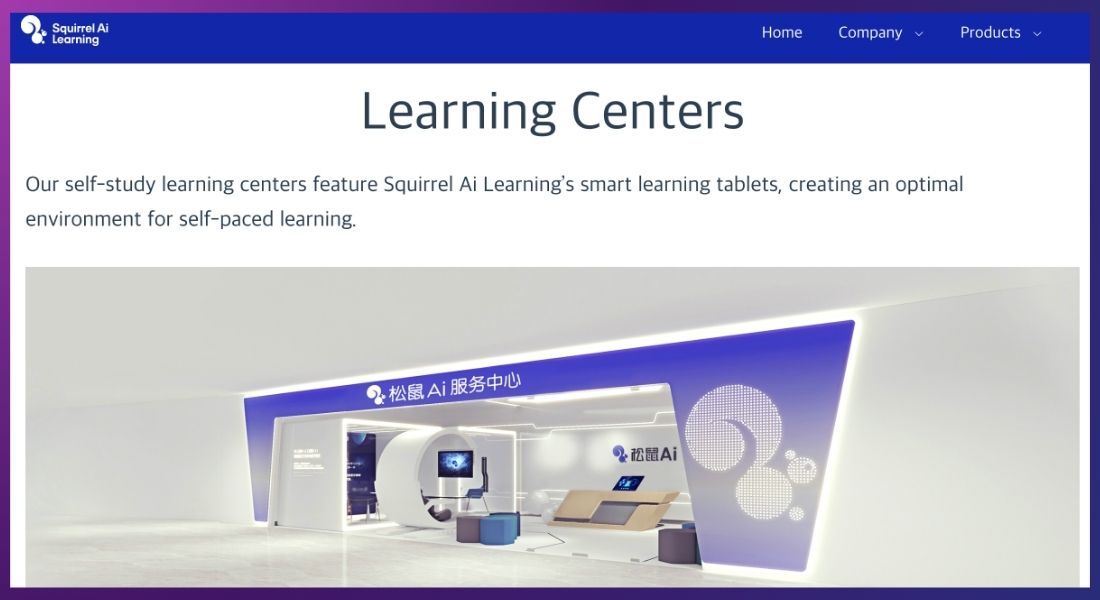👩🏫 Side Hustle #12: Tutoring
Published on October 17, 2024 Share


If you're looking for a flexible way to make extra income, starting a tutoring side hustle could be your answer. With online education proliferating, tutoring has become one of the most profitable side hustles. Whether you excel at academic subjects, coding, or music, tutoring provides personalized learning that helps students succeed. And the best part? You can earn between $1,500 and $4,000 monthly while positively impacting students' lives.
In this post, we'll explore why tutoring is such an attractive side hustle, who needs tutoring, how to generate leads, and even how to scale your tutoring business using AI tools to streamline your work.

Why Start a Tutoring Side Hustle?
There are advantages to starting a tutoring business beyond just the money. Additionally, it lets you work on your own terms and timetable. You have the freedom to choose your clientele, work from home, and even teach the subjects you are most passionate about. Regardless of your area of expertise, teaching brings up a world of opportunities.
According to Grand View Research, the global online tutoring market is projected to reach $12.81 billion by 2027. This massive growth is fueled by increasing demand for personalized education and the integration of AI-powered tools into the learning process.
Benefits of Tutoring Services:
- Growing Market: More students seek personalized education to supplement their learning, creating a constant demand for tutoring.
- Flexible Schedule: You can pick whether to work remotely or in person, choose your own hours, and work part-time or full-time.
- Rewarding Work: Helping students achieve their goals is not just fulfilling, but it also makes your work feel meaningful.
- Diverse Offerings: You can teach various subjects—academic courses, languages, music, or technical skills—based on your expertise.

Who Needs Tutoring Services?
The beauty of tutoring is that it caters to a wide range of learners. Tutoring serves a broad clientele from school kids to adults looking to upskill.
1. School Students
From elementary through high school, students often need extra support outside of the classroom. When it comes to making up lost lessons or getting ready for tests, tutoring can greatly improve their performance.
Example: A student struggling with chemistry might improve their understanding through personalized tutoring, leading to a noticeable increase in grades—sometimes as much as 15%.
2. College Students
College students often seek tutoring for help with challenging coursework, exam preparation, or even specific projects. Many need tutors for advanced subjects like engineering, economics, or computer science.
3. Adult Learners
Tutoring isn't just for kids and teens. Many adults pursue learning as part of lifelong education or career development. Adult learners frequently seek expert guidance to achieve their goals, whether learning a new language or mastering coding skills.
Pro Tip: Offering exam-specific tutoring for standardized tests like the SAT, GMAT, or coding certifications can significantly boost earnings.
4. Professionals
Professionals often require tutoring to sharpen their skills or prepare for certifications. Subjects like business software, technical writing, or advanced coding are popular among working adults looking to upskill.
How to Generate Leads for Tutoring Services
Now that you know your clients, the next question is: how do you find them? Growing your tutoring business starts with effective lead generation.
1. Build an Online Presence
Making a polished website or social media profile that showcases your abilities is the first step. List the subjects you tutor, provide references from previous pupils, and describe your credentials. This increases your credibility and facilitates finding you by possible clients.
2. Leverage SEO
You want your profile to show up when prospective students look for tutors online. Focus on target keywords like "online math tutor" or "coding tutor for beginners" and use SEO strategies to improve your website's search engine visibility. .
3. Paid Advertising
Paid advertising can help you quickly, but organic search is still helpful. You can target particular audiences—such as parents, students, or professionals—who are actively looking for tutoring services via platforms like Google AdWords or Facebook Ads.
4. Content Marketing
Share valuable content through blog posts, YouTube tutorials, or social media. Providing tips and study strategies positions you as an expert and attracts potential students who might later book your services.
How to Scale Your Tutoring Business
Once you've built a steady stream of clients, it's time to think about scaling. Growing your tutoring business means increasing your income potential and expanding your service offerings.
Offer Group Tutoring Sessions
While one-on-one tutoring is effective, it's not the only way to teach. Offering group sessions allows you to prepare multiple students simultaneously, increasing your revenue without requiring more hours.
Create Online Courses
Another way to scale is by creating pre-recorded courses or tutorials. These courses let students learn at their own pace and provide them with passive income. Whether you specialize in math, coding, or test preparation, there's a demand for quality online courses.
Specialize in a Niche
Concentrate on a specific niche can help you stand out in a crowded market. Whether it's SAT prep, coding boot camps, or language learning, specializing allows you to charge premium rates and attract students with specific needs.
Pro Tip: Niche tutoring areas like coding boot camps or SAT prep are lucrative and can position you as an expert in that field, enabling you to command higher rates.
How to Deliver Exceptional Tutoring Services
Providing excellent tutoring goes beyond just teaching—it's about tailoring your approach to each student's unique needs and guiding them to success. Here's how to ensure your tutoring services stand out and help your students achieve their goals.
Step 1: Understand Your Student's Needs
Start by thoroughly evaluating your student's present level of knowledge and proficiency. Finding learning gaps and figuring out their preferred method of learning depend on this phase. Are they having trouble understanding fundamental ideas? Do they require assistance learning complex subjects? You can concentrate on those areas once you've determined where they most need assistance.
Step 2: Develop Personalized Learning Plans
Every student is different, and a one-size-fits-all approach won't work. After assessing their needs, create a customized lesson plan tailored to their pace, goals, and learning style. A personalized plan ensures that each lesson builds on the last, making complex topics easier to grasp. Whether your student learns better through visual aids, hands-on practice, or interactive exercises, adapt your teaching style to make lessons more effective.
Example: For a high school student struggling with algebra, a personalized lesson plan could focus on breaking down equations into manageable steps, illustrating abstract ideas with instances from everyday life.
Step 3: Make Learning Engaging and Interactive
Let's face it—learning can be challenging, and it's easy for students to lose focus. To keep them engaged, incorporate teaching techniques, including visual aids, practice tests, interactive exercises, and real-world applications. You might use digital tools like whiteboards, quizzes, or even gamified elements to make the lessons more dynamic. When students actively participate in the learning process, they're more likely to stay motivated and retain the material.
Step 4: Monitor Progress Regularly
Learning is a journey, and tracking your student's progress is essential. Regular assessments—whether through quizzes, assignments, or open discussions—will help you identify what's working and what needs adjustment. Use these insights to modify your lesson plan, ensuring your student constantly improves and builds confidence.
Pro Tip: Share progress reports with your students (or their parents) to showcase their improvement. This boosts motivation and strengthens your relationship with them by demonstrating your commitment to their success.
Step 5: Provide Constructive Feedback and Support
Feedback is an important component of the learning process. Offer specific, constructive feedback that highlights both strengths and areas for improvement. Be encouraging and solution-oriented, ensuring your feedback boosts confidence while addressing challenges. Remember, the goal is to empower your students to overcome obstacles, not discourage them.
Step 6: Foster a Growth Mindset
The idea that learning is a process and that making errors is a necessary part of the process is among the most important lessons you can impart to your students. Encourage a growth mindset by showing them how to view challenges as growth opportunities. This mindset helps students become more resilient, curious, and engaged in learning, ultimately leading to better outcomes.
This refined version adds more depth and clarity to each step, emphasizes the importance of personalization, and provides actionable advice to make your tutoring services more effective. It also introduces a more encouraging and supportive tone to foster student engagement.
Best AI Tools for Tutoring Services
Integrating AI tools into your tutoring business can revolutionize how you deliver lessons. AI helps provide students with more personalized, efficient, and engaging learning experiences. Below are some AI-powered tools to enhance tutoring services and improve student outcomes.
Squirrel AI
Key Feature: Squirrel AI offers highly personalized learning experiences by adapting to each student's strengths and weaknesses. It uses advanced algorithms to tailor lessons, ensuring students focus on the areas they need the most help with.
Free Version: Squirrel AI offers paid plans with premium, personalized features.
Why It's Great: This tool is perfect for tutors who want to provide individualized instruction and improve their student's performance by identifying specific learning gaps.

Quizlet
Key Feature: Quizlet utilizes AI to create interactive learning tools, including flashcards, quizzes, and study sets. These resources make learning fun and engaging, keeping students interested and motivated.
Free Version: Available with premium upgrades for more advanced features.
Why It's Great: Quizlet's AI-powered study sets are excellent for helping students memorize information, prepare for exams, or review topics interactively.
Knewton
Key Feature: Knewton uses adaptive learning technology to tailor content based on each student's unique learning patterns. It ensures that the student receives personalized instruction that aligns with their pace and progress.
Free Version: A basic version, with paid options offering enhanced features, is available.
Why It's Great: Knewton is an excellent tool for tutors who want to offer dynamic, data-driven learning experiences that evolve with the student's progress.
Carnegie Learning
Key Feature: Carnegie Learning provides AI-powered tutoring specifically for math. It offers real-time feedback and personalized lessons that adjust according to the student's understanding and performance.
Free Version: Available with paid plans for advanced math tutoring features.
Why It's Great: If you're a math tutor, Carnegie Learning is a powerful tool to help students grasp complex concepts through AI-driven, adaptive lessons.
How to Price Your Tutoring Services
Setting the right price for tutoring services is crucial to building a successful business. You want to ensure your rates are competitive but must also be fairly compensated for your time and expertise. Below are some key strategies to help you price your tutoring services effectively.
Research Market Rates
The first step is to understand the going rates for tutors in your subject area and region. Research other tutors offering similar services and see how much they charge. Rates might differ greatly based on variables such as:
- Subject Difficulty: Tutors teaching advanced subjects like coding or calculus can often charge more than those tutoring general subjects like reading or basic math.
- Education Level: Tutors with advanced degrees or specialized certifications may command higher rates.
- Location: Rates can also fluctuate depending on where you're located. For example, tutors in metropolitan areas may charge more than those in smaller towns.
Consider Your Experience
Offyou'relower rates can help you attract your first clients if you're starting. As you get more expertise and get good feedback, you can progressively raise your fees. Clients are often willing to pay more for tutors with a proven track record, so focus on building your reputation early on.
Pro Tip: Even if you charge lower rates initially, highlight any unique qualifications or skills you bring, such as a degree in education, a subject specialization, or experience working with specific age groups.
Offer Package Deals
One of the best ways to secure long-term clients and ensure a steady income is by offering package deals. For example, you could offer a discount for clients who book a set number of sessions upfront, such as 10 or 20 lessons. This provides added value for your clients and helps you maintain a consistent schedule.
Example: A tutor offering individual sessions at $50/hour might offer a package of 10 sessions for $450, giving clients a discount while ensuring recurring business.
By researching the market, considering your experience, and offering flexible pricing options like package deals, you can set competitive rates that attract clients and help you grow your tutoring business steadily.

Conclusion
Starting a tutoring side hustle is a rewarding way to earn $1,500 to $4,000 monthly. By leveraging your knowledge, building an online presence, and incorporating AI tools, you can create a successful tutoring business that helps students and gives you the financial flexibility you desire. So, whether you're a math whiz, a language expert, or a coding guru, there's never been a better time to start your tutoring journey.
Want more ways to boost your income? Explore Translation Services and see how your language skills can open doors to new opportunities!




